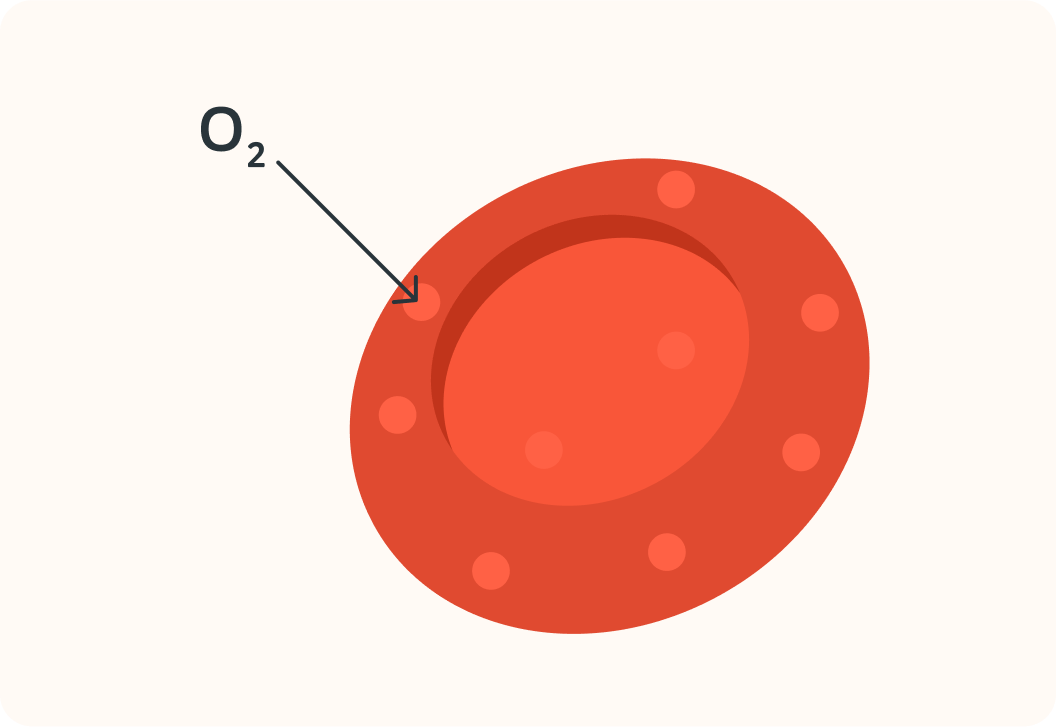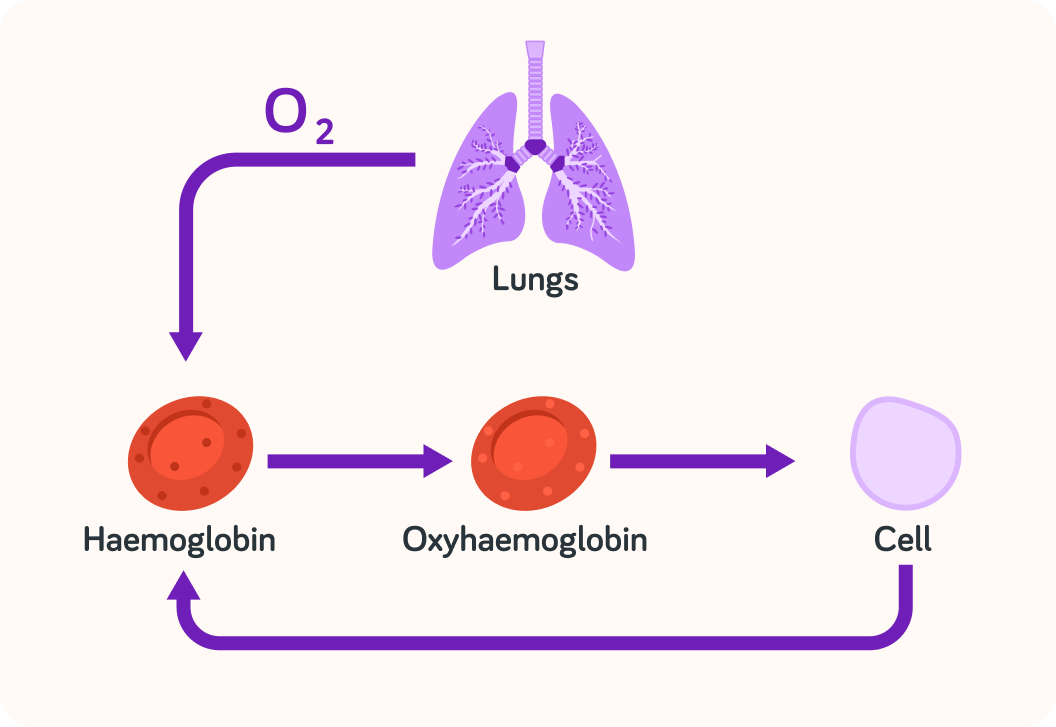YOU ARE LEARNING:
Red Blood Cells

Red Blood Cells
The function of red blood cells is to carry oxygen to cells that perform aerobic respiration.
Blood is a tissue because it has different types of cells in it. Pick 4 different types of cells in blood tissue below.

You can select multiple answers
So there are 4 types of cells in blood tissue
This lesson focuses on red blood cells.

This is a red blood cell. What is its function in the blood?
A) It carries nutrients. B) It produces antibodies. C) It carries oxygen.


Where do red blood cells pick up the oxygen from?
A) The heart B) The lungs C) Cells


Where do red blood cells deliver the oxygen to?
A) The heart B) The lungs C) Cells


What is the process called that cells use oxygen for?
A) Breathing B) Aerobic respiration C) Anaerobic respiration


Recap! Blood is a tissue
This means it has different types of cells in it.

This lesson focuses on red blood cells
There are also white blood cells, platelets and plasma.

Red blood cells carry oxygen
They pick up the oxygen in the lungs and deliver it to the cells.

Cells use oxygen for aerobic respiration
That is the process where cells produce energy and carbon dioxide.

Red blood cells have some specific features
These features mean that they are extremely good at transporting oxygen.

They contain a protein that oxygen can bind to. What is that protein called?


True or false? Red blood cells have no nucleus.


Why do you think red blood cells have no nucleus?
A) So that there is more room for haemoglobin. B) So that the cell doesn't get too heavy and sink. C) There weren't enough nuclei for all the body's cells.


Red blood cells also have a rather special "biconcave" shape
It's the shape you get if you take a ball of Blu Tack and squeeze it between two fingers.

The biconcave shape gives the cell a bigger surface area. Why is that a good thing?
A) The cell can absorb more oxygen faster. B) The body needs fewer red blood cells. C) Other cells move out of its way.


Finally, red blood cells are super tiny!
They have to deliver oxygen to other cells through those cells' tiny blood vessels.
Their biconcave shape also makes them particularly flexible to make it easier for them to go down those tiny tubes.

Now look at haemoglobin again
It's the protein inside red blood cells that binds oxygen.

True or false? Without haemoglobin, red blood cells would still be able to transport oxygen.


Haemoglobin is also the thing that gives blood its _________ colour.
A) yellow B) green C) red


When oxygen binds to haemoglobin in the lungs, it actually becomes a different molecule. What do you think we call that molecule?
A) Power haemoglobin B) Oxyhaemoglobin C) Full haemoglobin


Now, when the red blood cell has released its oxygen to the cell, oxyhaemoglobin turns back into _______________.


True or false? Haemoglobin in red blood cells then carries carbon dioxide back to the lungs.


Haemoglobin is specialised to bind to oxygen and turns into oxyhaemoglobin
It cannot bind to carbon dioxide. Carbon dioxide is carried from cells back to the lungs by the blood's plasma - not by red blood cells.

Summary! Blood is a tissue
It contains red blood cells, white blood cells, platelets and plasma.

Red blood cells carry oxygen to cells
They contain a protein called haemoglobin that binds to oxygen.

When oxygen binds to haemoglobin in the lungs, haemoglobin turns into oxyhaemoglobin
When the oxygen has been released to cells, oxyhaemoglobin turns back into haemoglobin.

Red blood cells do not carry carbon dioxide back to the lungs!
Haemoglobin can only bind to oxygen.

Red blood cells have no nucleus
This is to allow more room for haemoglobin inside the cell.

Red blood cells have a biconcave shape
That gives them a larger surface area so they can absorb more oxygen faster.

Finally, red blood cells are super tiny!
This means they can get into all the little tiny blood vessels that lead to individual cells.
Their biconcave shape also makes them particularly flexible to help them in these tiny tubes.

